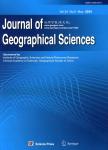Modeling the impacts of climate change on China's agriculture
Modeling the impacts of climate change on China's agriculture作者机构:Institute of Geographic Sciences and Natural Resources Research CAS International Institute for Applied System Analysis A-2361 Laxenburg Austria
出 版 物:《Journal of Geographical Sciences》 (地理学报(英文版))
年 卷 期:2001年第11卷第2期
页 面:149-160页
核心收录:
学科分类:09[农学] 0903[农学-农业资源与环境]
基 金:Young Scientist Summer Program at the International Institute for Applied System Analysis YSSP 1999 Austria
主 题:climate change Ricardian model China's agriculture
摘 要:The impacts of climate change on China s agriculture are measured based on Ricardian model. By using county-level cross-sectional data on agricultural net revenue, climate, and other economic and geographical data for 1275 agriculture-dominated counties in the period of 1985-1991, we find that both higher temperature and more precipitation will have overall positive impact on China s agriculture. However, the impacts vary seasonally and regionally. Higher temperature in all seasons except spring increases agricultural net revenue while more precipitation is beneficial in winter but is harmful in summer. Applying the model to five climate scenarios in the 2020s and 2050s shows that the North, the Northeast, the Northwest, and the Qinghai-Tibet Plateau would always benefit from climate change while the South and the Southwest may be negatively affected. For the East and the Central China, most scenarios show that they may benefit from climate change. In conclusion, climate change would be beneficial to the whole China.



